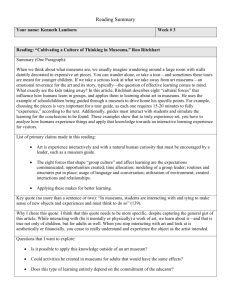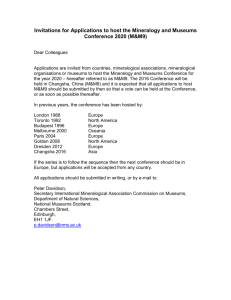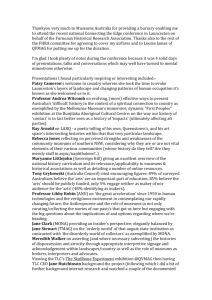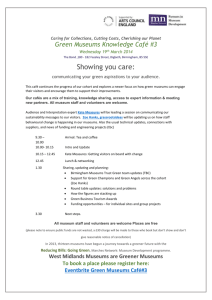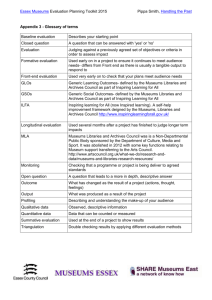Archeowiki paper - MWF2014: Museums and the Web
advertisement
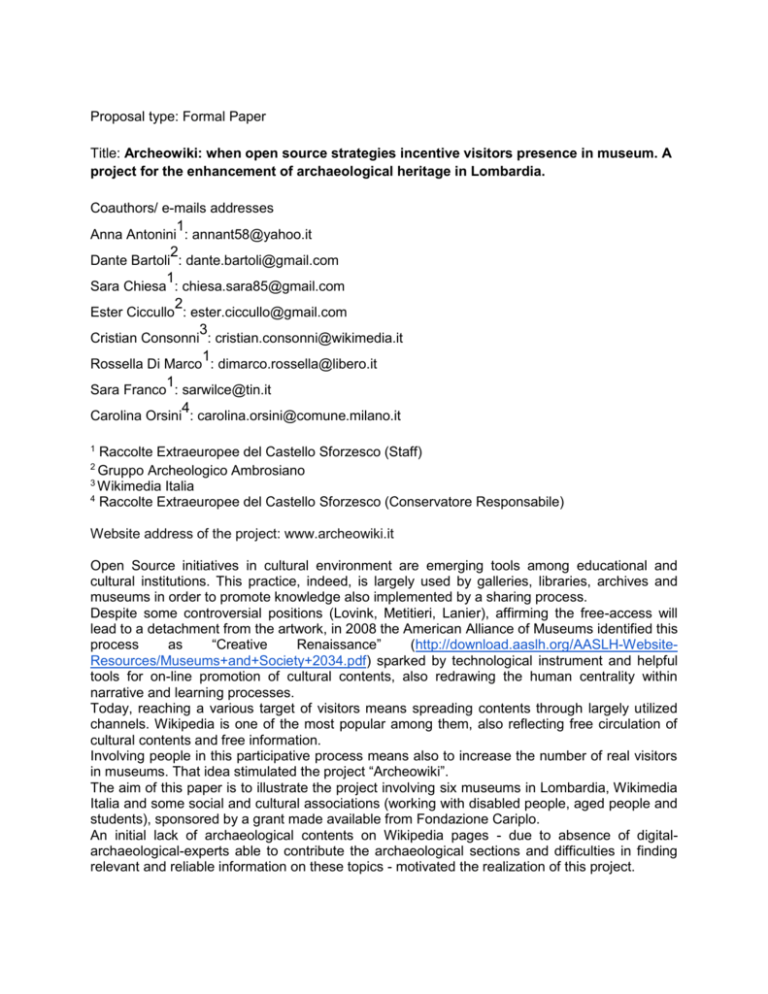
Proposal type: Formal Paper Title: Archeowiki: when open source strategies incentive visitors presence in museum. A project for the enhancement of archaeological heritage in Lombardia. Coauthors/ e-mails addresses 1 Anna Antonini : annant58@yahoo.it 2 Dante Bartoli : dante.bartoli@gmail.com 1 Sara Chiesa : chiesa.sara85@gmail.com 2 Ester Ciccullo : ester.ciccullo@gmail.com 3 Cristian Consonni : cristian.consonni@wikimedia.it 1 Rossella Di Marco : dimarco.rossella@libero.it 1 Sara Franco : sarwilce@tin.it 4 Carolina Orsini : carolina.orsini@comune.milano.it 1 Raccolte Extraeuropee del Castello Sforzesco (Staff) Gruppo Archeologico Ambrosiano 3 Wikimedia Italia 4 Raccolte Extraeuropee del Castello Sforzesco (Conservatore Responsabile) 2 Website address of the project: www.archeowiki.it Open Source initiatives in cultural environment are emerging tools among educational and cultural institutions. This practice, indeed, is largely used by galleries, libraries, archives and museums in order to promote knowledge also implemented by a sharing process. Despite some controversial positions (Lovink, Metitieri, Lanier), affirming the free-access will lead to a detachment from the artwork, in 2008 the American Alliance of Museums identified this process as “Creative Renaissance” (http://download.aaslh.org/AASLH-WebsiteResources/Museums+and+Society+2034.pdf) sparked by technological instrument and helpful tools for on-line promotion of cultural contents, also redrawing the human centrality within narrative and learning processes. Today, reaching a various target of visitors means spreading contents through largely utilized channels. Wikipedia is one of the most popular among them, also reflecting free circulation of cultural contents and free information. Involving people in this participative process means also to increase the number of real visitors in museums. That idea stimulated the project “Archeowiki”. The aim of this paper is to illustrate the project involving six museums in Lombardia, Wikimedia Italia and some social and cultural associations (working with disabled people, aged people and students), sponsored by a grant made available from Fondazione Cariplo. An initial lack of archaeological contents on Wikipedia pages - due to absence of digitalarchaeological-experts able to contribute the archaeological sections and difficulties in finding relevant and reliable information on these topics - motivated the realization of this project. The project favoured the digitization of about a thousand of images and documents belonging to museums involved in Archeowiki. One of the action of project is the realization of “Wikigite” (WikiTrips). Wikigite consists of a guided tour through the museums’ archaeological collections (http://wlm.wikimedia.it/wiki/WikiGite), followed by a workshop hold by an archaeologist and a Wikipedia editor, with the aim of teaching to edit cultural contents on Wikipedia and, at the same time, to upgrade the free contents previously digitized by museums part of the project. Wikigite are currently ongoing, offering a didactical activity specifically designed for students, blind people and aged people. Wikipedia expert editors helped in creation of virtuous alphabetization process, by tutoring both teachers and students on how to co-write pages in Wikipedia, in particular on cultural subjects. Archeowiki is inspired to other projects with both a national and international scope such as GLAM-Wiki, Wiki Loves Monuments and Share you knowledge, but it is an experimental action in Lombardia, where the most innovative effect has been the positive reply and support of Sorpintendenza Archeologica della Lombardia, that demonstrated the awareness of changes in the cultural sector. Technological tools play a growing role in spread culture and educate people, opening new scenarios and new ways of co-working as virtuous collaborations between private and public institutions. Moreover, Archeowiki offers to associations, museums and on-line users, the opportunity to obtain an enhancement of the cultural heritage, offering visibility, fruition, education and know how, by working together. Wikipedia determines a higher and free visibility for public institution, those small and/or not well known, that can intensify the number of interested people in archaeological collections. Reference: Costa S., Zanini E., Sharing knowledge in archaeology: looking forward the next decades in Digital heritage in the new knowledge environment. Sharing spaces and open paths to cultural content. Athens, 2009, pp. 69 - 72 Lanier, J. (2010). You Are Not a Gadget: A Manifesto. Alfred A. Knopf Lovink, G.W. (2002). Dynamics of critical Internet culture (1994-2001). Melbourne: The University of Melbourne Metitieri, F. (2009). Il Grande Inganno del Web 2.0. Laterza


